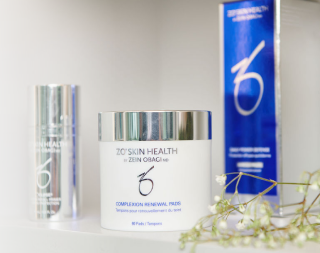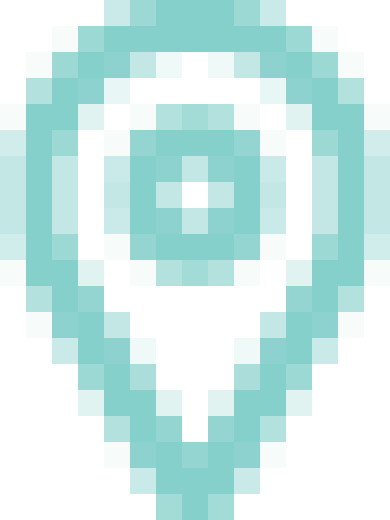BLU-U®
Blue Light Therapy
Treat Your Acne With Our Specialized BLU-U® Blue Light Therapy In Vancouver—Your Skin Will Thank You Later!
Request Consultation
Blu-U Acne Treatment
Are you fed up with breakouts and blemishes? Healthy skin begins with treating the underlying cause of acne and working towards preventing new breakouts.
Equally prevalent in teenagers as well as adults, acne often undermines self confidence, and our doctors at EverYoung are passionate about finding strategies to help you keep it in check.
BLU-U photodynamic therapy treats moderate acne vulgaris is a completely safe, painless and comfortable treatment, with no side effects. It uses a therapeutic blue light to control excess oil in the skin and target the bacteria (P. Acnes) responsible for inflammation, before it has a chance to thrive and inflame your skin. Over the course of treatment, you will experience a gradual clearing of pimples, blackheads and whiteheads; with the goal of improving your skin’s appearance and reducing further breakouts.
Blu-U Acne Treatments at a Glance

6 Treatments

Months

None

Results
6 Treatments

of Results
Months

None

Low

Low

30 Minutes

Right Away

Time
60 Minutes

Work
Right Away
Benefits of Blu-U Acne Treatment




Vancouver Blue Light Therapy For Acne FAQs
Yes. Blu-U delivers fluorescent light over a large area and does not emit any UV light. It is completely safe and the light is not hot.
Treatments are completely painless and consist of sitting with your face near the light for a short period of time, usually once or twice a week.
BLU-U requires a series of treatments to get your acne under control. Our physicians at EverYoung will determine a schedule based on the severity of your acne.
BLU-U light therapy uses a unique blue light that kills the P. acnes bacteria responsible for acne and inflammation in the skin.
The most common dermatological diagnosis that blue light treats is acne, specifically acne vulgaris. Blue light therapy targets the bacteria associated with acne and helps reduce inflammation, leading to improvements in acne-prone skin.
The frequency of blue light therapy sessions can vary depending on the individual’s condition and treatment plan, but it is typically done two to three times per week for several weeks during the initial treatment phase.
Blue light therapy should not be used by individuals who are sensitive to light, have a known allergy to the photosensitizing agent used, or are pregnant, as the safety of the treatment during pregnancy has not been established. Additionally, people with certain medical conditions, such as lupus or porphyria, should avoid blue light therapy. It’s crucial to consult with a healthcare provider to assess individual suitability for the treatment.
Blue light therapy affects the skin by targeting and destroying the bacteria responsible for acne and by reducing inflammation, leading to a decrease in acne lesions and overall improvement in skin appearance. It can also stimulate collagen production and improve skin texture, making it beneficial for some cosmetic applications.
The time it takes for blue light therapy to heal and show noticeable results can vary depending on the individual’s condition and the severity of the skin concern being treated. In some cases, improvements can be seen within a few weeks, while more extensive or stubborn conditions may require several months of treatment. It’s essential to follow the recommended treatment plan and consult with a healthcare provider for a realistic timeline.
After blue light therapy, you should follow your healthcare provider’s specific post-treatment instructions, which typically include gentle cleansing and moisturizing of the treated area. Additionally, it’s important to protect the skin from excessive sun exposure and apply sunscreen as recommended to prevent potential irritation and sunburn.
The duration of blue light therapy sessions on the face can vary depending on the specific treatment plan and the device being used. Typically, sessions can last anywhere from a few minutes to 20-30 minutes per session, with treatment courses consisting of multiple sessions over several weeks. The frequency and duration should be determined by a healthcare provider based on the individual’s condition and response to treatment.
Ingredients such as antioxidants, including vitamins C and E, niacinamide, and ferulic acid, are often used in skincare products to help protect the skin from potential damage caused by exposure to blue light. These ingredients can help neutralize free radicals and minimize oxidative stress on the skin.
The frequency of blue light therapy sessions can vary depending on the specific treatment plan and the device being used. Typically, sessions may be done two to three times per week during the initial treatment phase and less frequently for maintenance. It’s crucial to follow the recommended treatment schedule provided by your healthcare provider for the best results.
There’s no specific time frame for avoiding blue light after blue light therapy, as the therapy itself involves exposure to blue light. However, you should take precautions to protect your skin from excessive blue light exposure in daily life, such as using blue light-blocking screens on electronic devices or wearing sunscreen to reduce potential skin damage.
Yes, blue light therapy can improve skin by targeting and reducing acne lesions, as well as by stimulating collagen production, which can lead to a smoother and more youthful-looking complexion. Its effectiveness can vary depending on the individual’s skin condition and the specific treatment protocol.
The number of blue light therapy treatments needed for acne can vary depending on the severity of the acne and individual response to the treatment. Typically, a series of several treatments, ranging from 6 to 12 sessions or more, may be required for optimal results. The exact number and frequency of sessions should be determined by a healthcare provider based on the patient’s specific needs.
Blue light therapy can be used at any time of day, but it’s often recommended to use it during the morning or daytime hours to align with the body’s natural circadian rhythm. Using it in the morning can help regulate the sleep-wake cycle and minimize potential disruption to nighttime sleep patterns.
Blue light therapy can be performed in the morning or daytime to align with the body’s natural circadian rhythm and potentially minimize disruption to nighttime sleep patterns. However, the specific timing can depend on individual preferences and schedules.
The primary disadvantage of blue light therapy is that it can cause skin sensitivity, redness, and dryness, especially in the initial treatment stages. Additionally, it may not be effective for all types of acne, and overuse can potentially lead to the development of antibiotic-resistant bacteria.
Protection from blue light, particularly from electronic screens, is a consideration for some individuals due to its potential impact on skin health. While more research is needed to fully understand the extent of its effects, using blue light-blocking screens or skincare products with antioxidants can help protect the skin.
To prevent potential skin damage from blue light, you can use blue light-blocking screens on electronic devices and incorporate skincare products containing antioxidants like vitamin C and E into your routine to help protect and nourish the skin.
Blue light therapy is generally not used to treat hyperpigmentation and may not worsen the condition, but it’s essential to consult with a healthcare provider for the most appropriate treatment for hyperpigmentation concerns.
Blue light can have benefits like improved mood and increased alertness but prolonged exposure, especially from screens at night, can disrupt sleep patterns and potentially lead to digital eye strain.
Eye protection, such as specialized goggles, is usually not needed for blue light therapy, as the therapy is directed at the skin rather than the eyes, but it’s essential to follow any specific safety instructions provided by your healthcare provider during the treatment.
Side effects of blue light face treatment can include temporary skin redness, dryness, and increased sensitivity, which typically resolve shortly after the treatment is completed.
Blue light can penetrate the skin’s epidermis (the outermost layer), making it effective for treating conditions on or near the skin’s surface, such as acne.
Yes, you can usually wash your face after blue light therapy, but it’s essential to use gentle skincare products and avoid any harsh or abrasive cleansers that may irritate the treated skin.
Blue light therapy is not typically used for wound healing, as it primarily targets specific skin conditions like acne and may not promote wound healing in the same way as other therapies.
The frequency of blue LED light treatments for skin can vary, but typically, it may be used two to three times per week during the initial treatment phase and less frequently for maintenance, with the exact schedule determined by the individual’s specific condition and response to treatment.
To prepare for blue light therapy, you should cleanse your skin thoroughly to remove makeup and dirt, and avoid applying any products that may create a barrier between the light and your skin, such as creams or lotions.
Blue light therapy is primarily used for active acne and may have limited effectiveness in directly addressing acne scars, although it can help improve overall skin texture and appearance.
Blue light therapy can be effective in treating acne by targeting and reducing the bacteria responsible for acne, as well as by reducing inflammation, leading to a decrease in acne lesions.
The most commonly used wavelength for blue light therapy in dermatology is around 420 to 470 nanometers, as it is effective at targeting acne-causing bacteria while minimizing potential skin damage.
The best wavelength of blue light for treating acne is typically around 415 to 420 nanometers, as it is most effective at targeting and destroying the bacteria associated with acne.
Before blue light therapy, you should ensure your face is clean and free of makeup and skincare products, as any barriers like creams or lotions can interfere with the effectiveness of the treatment.
The best light therapy schedule can vary depending on the specific condition being treated, but it often involves daily sessions of 20-30 minutes each, preferably in the morning or daytime, and continues for several weeks.
Limiting blue light exposure before bed is essential because it can disrupt the body’s natural sleep-wake cycle by suppressing the production of melatonin, a hormone that regulates sleep.
Dermatologists use blue light therapy to treat skin conditions such as acne by targeting and reducing the bacteria responsible for acne and by reducing inflammation, leading to improvements in skin health and appearance.
The frequency of using blue light on your face can vary depending on the specific skin concern being treated, but it’s typically used two to three times per week during the initial treatment phase and less frequently for maintenance.
Prolonged and excessive exposure to blue light, particularly from electronic screens, can potentially lead to digital eye strain and disrupt sleep patterns, but it’s less likely to cause skin damage compared to other forms of light, such as UV radiation.
Yes, the skin can absorb blue light to some extent, with its penetration primarily affecting the epidermal layers of the skin.
Yes, overuse of blue light therapy, especially for acne treatment, can potentially lead to the development of antibiotic-resistant bacteria and skin irritation.
After blue light treatment, you should avoid excessive sun exposure and apply sunscreen to protect your treated skin from potential irritation and sunburn.
One major effect of blue light on the skin is its ability to target and reduce acne by destroying acne-causing bacteria and reducing inflammation.
After blue light treatment, you can expect some temporary redness, dryness, or skin sensitivity in the treated area, but these side effects typically resolve shortly after the treatment is completed.
Blue light treatment is generally considered safe for most individuals when performed by trained professionals and following proper safety guidelines, but it may not be suitable for everyone, so it’s essential to consult with a healthcare provider to determine if it’s appropriate for your specific condition.
SPF (sunscreen) primarily protects against UV radiation, but some sunscreen formulations may also offer limited protection against blue light, depending on their ingredients, although this protection may not be comprehensive.
Yes, blue light therapy is FDA approved for the treatment of acne and certain other dermatological conditions.
Yes, you can generally exercise after blue light therapy, but it’s essential to follow any specific post-treatment instructions provided by your healthcare provider and avoid excessive sweating or friction on the treated skin to prevent irritation.
Blue light therapy primarily targets and reduces acne and may indirectly help improve the appearance of pores, but it’s not specifically designed to shrink pores.
Blue light therapy is generally considered safe for the face when performed by trained professionals and following proper safety guidelines, but it may not be suitable for everyone, so it’s essential to consult with a healthcare provider to determine if it’s appropriate for your specific condition.
To use a blue light therapy pen, typically cleanse your skin, apply the pen directly to the affected area, and follow the manufacturer’s instructions for treatment duration and frequency, moving the pen over the skin’s surface during the session.
Using blue light therapy in combination with tretinoin is possible and may be recommended by a dermatologist for certain skin conditions, but it’s essential to follow their guidance, as tretinoin can increase skin sensitivity.
After blue light therapy, it’s important to avoid excessive sun exposure, harsh skincare products, and abrasive treatments to prevent potential skin irritation and sunburn, and follow any specific post-treatment instructions provided by your healthcare provider.
Book an
Appointment

ALL SERVICES
- Acne treatment
- BBL- IPL Photofacial
- Body Fx
- Botox
- Coolsculpting
- Dermal Fillers
- Morpheus8
- Sylfirm X
- Sofwave
- Fotona StarWalker®
- Fractora
- Hair Loss / Balding
- Hydrafacial MD
- Laser Hair removal
- Alma Harmony® XL Pro
- Alma Harmony® XL Pro ClearLift™
- Alma Harmony® XL Pro Dye VL Laser
- Lip augmentation
- Laser Genesis
- Microdermabration
- Microneedling
- Non-surgical Facelift
- Pigmentation Treatment
- PDRN Salmon DNA
- Picosure
- Prp Blood Facial
- Red and vessels treatment
- RF Collagen Induction
- Ultherapy
- Thermage
- Thermage® CPT™
- Thermage® FLX
- Vaginal Rejuvenation
Where to Find Us?
Downtown Vancouver

MondayClosed
Tuesday10:00am–6pm
Wednesday10:00am–6pm
Thursday10:00pm–6pm
Friday10:00am–6pm
Saturday10:00am–6pm
SundayClosed
 604-706-1503 (English)
604-706-1503 (English) 604-305-2098 (Chinese)
604-305-2098 (Chinese)Metrotown, Burnaby

Monday10:00am–6pm
Tuesday10:00am–6pm
Wednesday10:00am–6pm
Thursday10:00pm–8pm
Friday10:00am–6pm
Saturday10:00am–6pm
Sunday10:00am–6pm
 604-305-2098 (English)
604-305-2098 (English) 604-305-2098 (Chinese)
604-305-2098 (Chinese)Free Parking Available
GET DIRECTIONSPort Coquitlam

Monday10:00am-6pm
Tuesday10:00am-6pm
Wednesday10:00am-6pm
Thursday10:00am-6pm
Friday10:00am-6pm
Saturday10:00am-6pm
SundayClosed
 604-210-6319 (English)
604-210-6319 (English) 604-305-2098 (Chinese)
604-305-2098 (Chinese)Free Parking Available
GET DIRECTIONSNorth Vancouver

MondayClosed
Tuesday10:00am–6pm
Wednesday10:00am–6pm
Thursday10:00pm–6pm
Friday10:00am–6pm
Saturday10:00am–6pm
SundayClosed
 604-265-7044 (English)
604-265-7044 (English) 604-305-2098 (Chinese)
604-305-2098 (Chinese)Free Parking Available
GET DIRECTIONSWith locations in Downtown Vancouver, North Vancouver, Burnaby & Port Coquitlam, we proudly serve people throughout greater Vancouver and the lower mainland with all of their acne, skin and beauty needs.
Contact us now to book an appointment.





